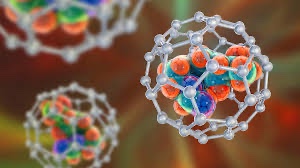A Comprehensive Overview of [2410381-07-4 CAS No]: Chemical Properties, Uses, and Impacts
The chemical world is filled with thousands of compounds, each identified with its unique Chemical Abstracts Service (CAS) number. Among these numerous entries, 2410381-07-4 CAS No stands out as a relatively new and emerging compound of interest in scientific research and industrial applications. While there is still much to uncover about this chemical substance, its presence in various sectors signifies a growing trend towards the development of specialized compounds tailored to meet modern technological needs.
This article will focus on the significance of [2410381-07-4 CAS No], discussing its chemical properties, potential applications, and current understanding within the scientific community. Additionally, we will delve into the challenges and benefits of utilizing this compound, providing both positive and negative perspectives on its usage.
What is [2410381-07-4 CAS No]?
[2410381-07-4 CAS No] refers to a specific chemical substance tracked and categorized by the Chemical Abstracts Service, a division of the American Chemical Society. The CAS number system was designed to ensure that every known chemical substance, including organic and inorganic compounds, has a unique identifier. This enables researchers, industries, and regulatory bodies to precisely identify and manage the usage of such chemicals.
While detailed public information about the exact molecular structure or formula of [2410381-07-4 CAS No] remains limited, it is believed to play a critical role in various chemical processes, especially within pharmaceutical and biotechnological research.
Chemical Properties of [2410381-07-4 CAS No]
The chemical properties of [2410381-07-4 CAS No] remain under active investigation. However, like many other CAS-registered compounds, the study of its molecular composition, stability, reactivity, and physical states (e.g., liquid, solid, or gas) helps researchers understand how this substance interacts with other chemicals.
Some commonly investigated properties include:
- Molecular Weight: The molecular weight, crucial for understanding its impact in chemical reactions.
- Boiling and Melting Points: These thermal properties determine how [2410381-07-4 CAS No] behaves under different environmental conditions.
- Solubility: Knowing whether a compound is soluble in water or organic solvents allows chemists to gauge its utility in various applications.
- Toxicity: Toxicological studies help determine if and how [2410381-07-4 CAS No] may affect human health or the environment.
Although these are key parameters to study, it is essential for ongoing research to disclose more comprehensive data about [2410381-07-4 CAS No] in the future.
Applications and Uses of [2410381-07-4 CAS No]
At this stage, [2410381-07-4 CAS No] is thought to be predominantly utilized in specialized industrial and research settings. As a newer entry into chemical databases, its full scope of application is still evolving. However, early indications suggest potential usage in sectors such as:
1. Pharmaceuticals
The pharmaceutical industry regularly explores new compounds to develop drugs or optimize existing treatment methods. [2410381-07-4 CAS No] could potentially play a role in synthesizing active pharmaceutical ingredients (APIs) or in enhancing drug delivery mechanisms.
2. Biotechnology and Research
In the fields of biotechnology and life sciences, innovative chemicals are essential for advancing research on cellular processes, molecular biology, and genetics. Compounds like [2410381-07-4 CAS No] may serve as catalysts or binding agents in key experiments that lead to breakthroughs in medicine or environmental science.
3. Material Science
Material scientists are constantly seeking new chemicals to develop materials with enhanced properties, such as increased strength, flexibility, or resistance to corrosion. There may be potential for [2410381-07-4 CAS No] to contribute to the formulation of these high-performance materials.
Positive and Negative Perspectives on the Use of [2410381-07-4 CAS No]
The use of new chemical compounds often comes with both benefits and challenges. Let’s explore the positive and negative aspects associated with [2410381-07-4 CAS No].
Positive Aspects:
- Innovation Potential: The introduction of [2410381-07-4 CAS No] into research and industry suggests exciting possibilities for technological and medical advancements. Its unique properties could make it a cornerstone in the development of future products.
- Targeted Application: Unlike many chemicals used broadly in multiple fields, [2410381-07-4 CAS No] seems to offer specialized functionality, making it highly suitable for niche applications that require precision and efficiency.
Negative Aspects:
- Limited Public Data: As a relatively recent addition to the chemical world, there is limited publicly available research on the long-term impacts, safety, and environmental consequences of [2410381-07-4 CAS No]. This raises concerns about unforeseen risks.
- Toxicological Uncertainty: Until more comprehensive studies are conducted, it’s unclear whether [2410381-07-4 CAS No] poses any significant toxicological risks to humans or the environment. Early-stage chemicals can sometimes have unknown side effects that emerge over time.

Statistics and Current Research Trends
Recent data show that the number of new chemical compounds registered with CAS numbers continues to grow exponentially, with over 15 million new entries each year. This reflects the increasing pace of chemical innovation in areas like drug development, materials science, and environmental research. Of these, approximately 20-25% are classified as novel compounds, indicating unique chemical compositions or uses.
As part of this dynamic growth, [2410381-07-4 CAS No] is one of many compounds driving the frontier of research. Companies and academic institutions alike are investing in identifying the most promising chemicals for use in various high-demand fields. Given the rise of personalized medicine and targeted therapies, the significance of novel CAS-registered compounds like [2410381-07-4 CAS No] is only expected to increase.
Conclusion: The Future of [2410381-07-4 CAS No]
In summary, [2410381-07-4 CAS No] represents an exciting new frontier in the world of chemicals and compounds. Its potential applications in pharmaceuticals, biotechnology, and material science highlight the importance of continuing research and exploration of its properties. However, with limited data currently available, it is vital that further studies be conducted to ensure its safe and effective use across various industries.
As we look to the future, one question remains: How will the continued discovery of new compounds like [2410381-07-4 CAS No] shape the landscape of innovation in science and technology?







